As we become more engaged towards climate change and reducing GHG emissions, more and more cites wish to improve their transport networks by transitioning their fleets to electrically powered buses.
With such new technologies, transport agencies face new challenges: what would be the autonomy of the new buses? How should service rotation be updated? How many buses are required? With additionally more complex issues arising: how will the new fleet be recharged? What charging infrastructures are needed? What electrical distribution upgrades are necessary? What are the associated costs? How will the operation be supervised and successfully executed?
Partnering with a technical expert will enable transport operators to focus on their core missions: ensuring the mobility of people within their cities, SYSTRA is such an expert.

ELECTROMOBILITY CHALLENGES

RANGE & TRANSPORT PLANNING
The range and technology of electric vehicles is evolving rapidly but is still limited compared to diesel vehicles. Vehicles’ autonomy must be carefully assessed to ensure it meets a route’s energy demands. Considering such factors as weather conditions, terrain, and traffic congestion must also be considered.

INFRASTRUCTURE & SMART DEPOT
Charging infrastructures require planning and building to accommodate electric vehicles. This can include charging stations at depots or along roads, as well as electrical upgrades to accommodate higher power requirements of certain electric vehicles.

COSTS & INVESTMENT
Electric vehicles are generally more expensive than diesel vehicles at purchase. This means that the upfront cost of transitioning to an electric fleet can be significant. However, the lower operating costs of electric fleet (e.g., lower fuel and maintenance costs) can offset the upfront costs over time.

SOLUTION: OPTIMAL DESIGN USING OUR MODELLING & SIMULATION TOOLS
SYSTRA Canada has created a suite of design tools to simulate e-buses operation and assist our partners navigate through e-mobility challenges and maximize benefits.
Efficiently managing a depot and its associated operations is crucial for maximizing performance and minimizing costs in transportation and logistics. This comprehensive approach begins with selecting an optimal depot location, which necessitates analyzing proximity to key routes, land availability, local regulations, and accessibility and designing infrastructure with the right sizing and flexibility is essential for accommodating current needs and future growth.
Equally important is developing and testing effective charging strategies, depot management protocols, and AI-driven energy forecasting models to ensure operational efficiency and reliability.
Building feasible route schedules, simulating operational scenarios, and tracking asset lifecycles further enhance service continuity and proactive maintenance planning.
SYSTRA Canada has digital solutions that allow a seamless transition for routes and assets, involving meticulous coordination, staff training, and infrastructure upgrades, ensures minimal service disruption and maximizes the benefits of new technologies.
Furthermore, preservation of the environment being a major preoccupation, estimating and reducing GHG emissions would be crucial to meet environmental compliance.
MORE ABOUT THE TOOLS
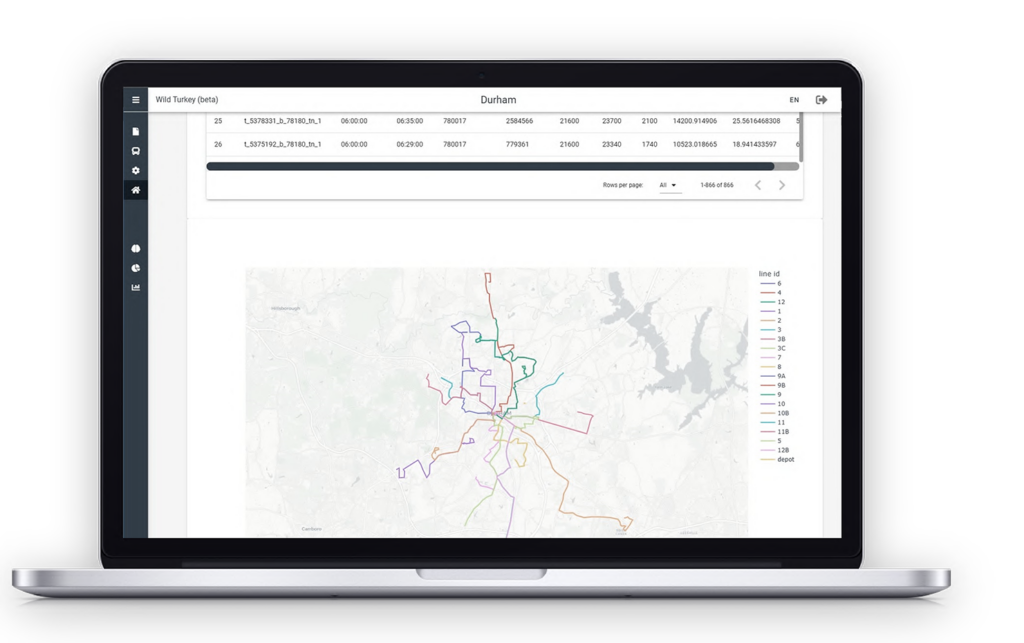
WILD TURKEY
Build your block schedule integrating vehicle energy consumption & autonomy:
- Simple & fact scheduling: Draft a scenario within 30 minutes to an hour.
- Electric vehicle considerations: Set energy consumption per trip and battery autonomy per vehicle.
- Industry standard inputs: GTFS and CSV file.
- Phasing proof: Allow mixed fleet and on-route charging.
- Convenient exports: Enhanced GTFS CSV export.
TESS
Model your depot and simulate operation & charging strategies:
- Integrated physical constraints: Accurately model parking space and depot layout.
- Integrated operation constraints: Vehicle parking strategies, Vehicle trip matching strategies, Vehicle charging strategies.
- Minimize charging infrastructure: Test ratio – Charger scenarios, try various power capacities, find the best CAPEX/reliability ratio.
- Minimize power demand: Run peak shaving scenario, Integrate energy cost variation.
- Simulate operation & validate charging strategy: Simulate daily operation, run disruption scenarios, export charging strategy pattern.
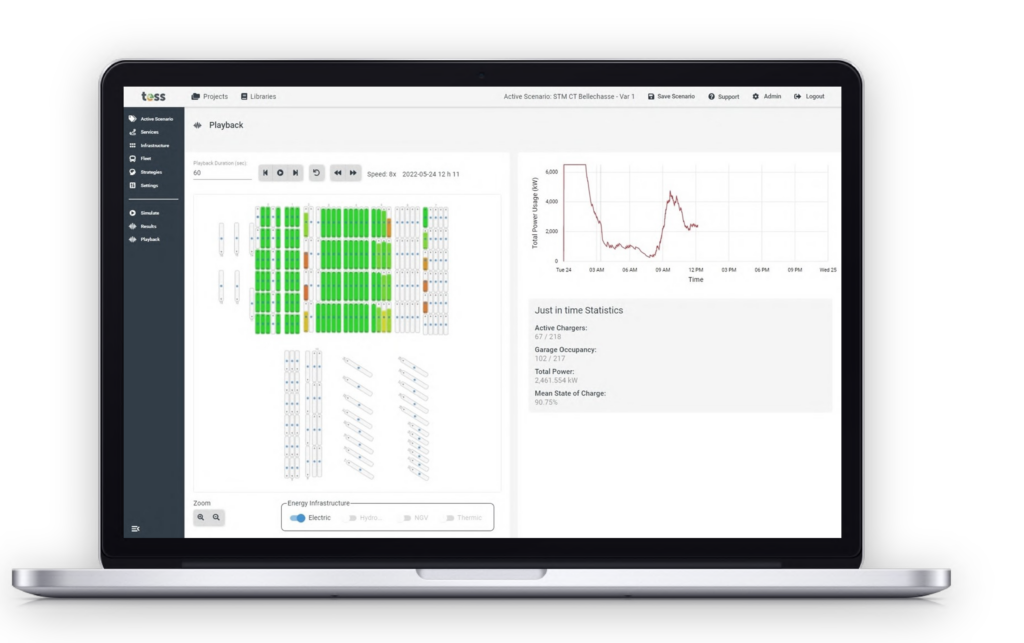
Seamless Support Across All Phases
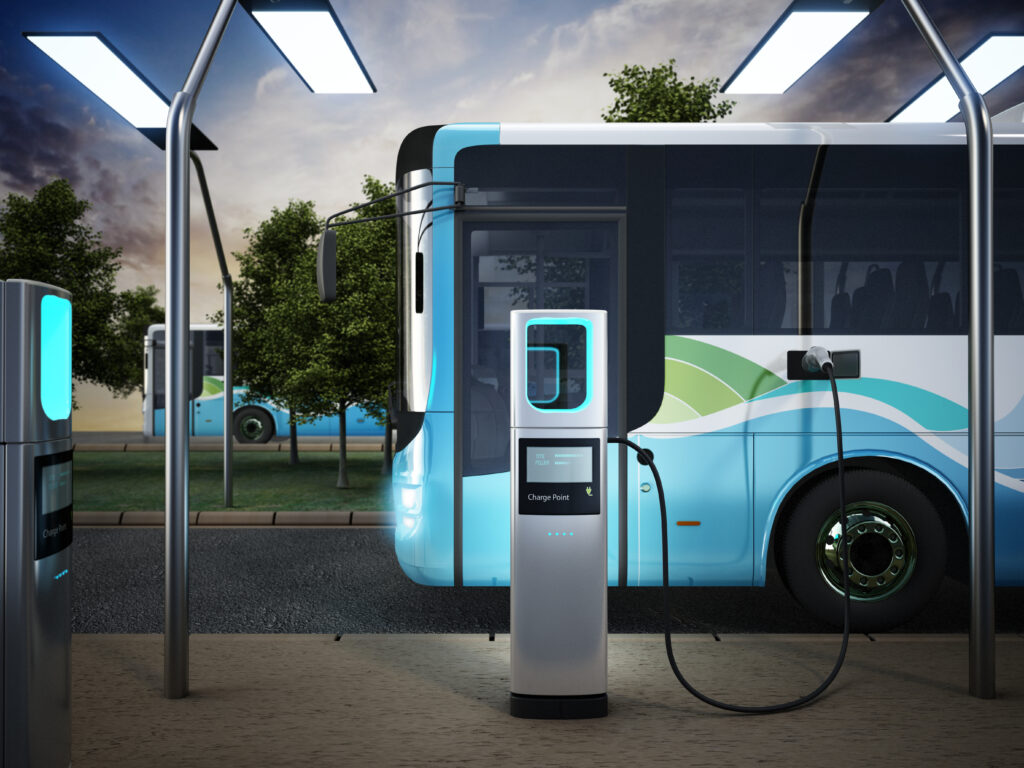
Following a thorough discussion with the client to understand their operational needs and objectives, SYSTRA Canada conducts an in-depth assessment to identify specific goals. Based on this, SYSTRA Canada provides a tailored study for each operator, executed through a series of detailed steps.
1. Energy Consumption Analysis
Using existing site data from in-services buses and/or research data, we can estimate a precise mean consumption and autonomy, considering bus model, weather conditions, route profile and traffic.
2. Create an Electrified Transport Offer
Based on the existing transport offer (ex. GTFS files) we will create an electrified block schedule using Wild Turkey.
3. Define the Fleet Size
TESS helps assess the optimal fleet size of BEB considering their consumption, autonomy, and operational conditions (weather, traffic profile, etc.).
4. Define the Need for Charging Infrastructure (type, size, power, etc.)
Modelling the configuration of the garage, including the arrangement of parking spaces and the integration of charging stations, through the utilization of our proprietary tool TESS, an advanced simulation software tailored for electrified garages. These simulations facilitate informed decision-making regarding optimal charging infrastructure, with a focus on minimizing the required components.
Parameters to be considered and compared:
- Seasonal conditions
- Different charger powers
- Different charging strategies/configurations
- Different bus models (battery capacities)
- Cases of electrical network failures
5. Analyze the Transition Process
During the transitional period, SYSTRA will consider different strategies to operate a mixed fleet service (diesel and electric), until the diesel fleet is retired and with the electrified infrastructures progressively deployed.
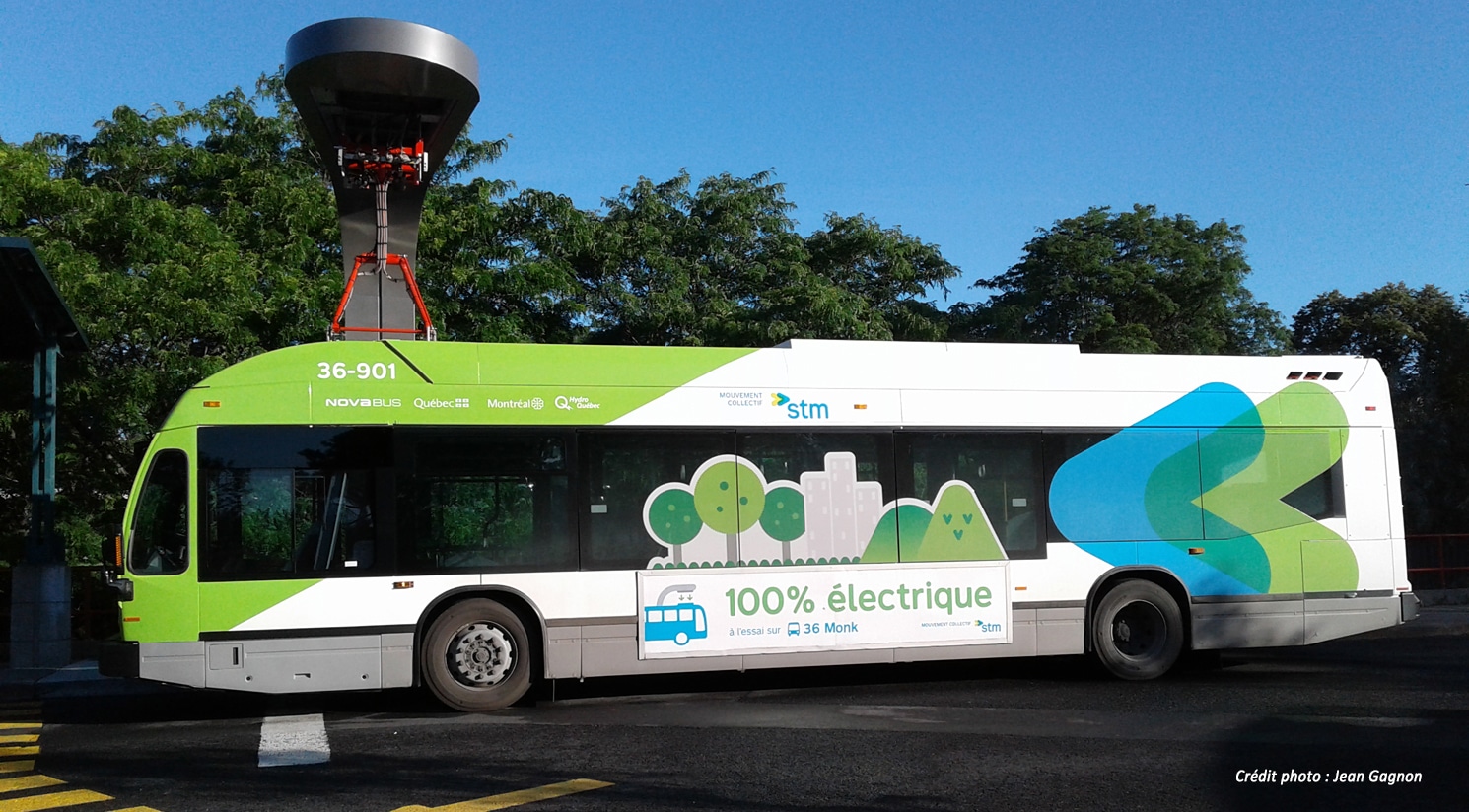
to sum up…
SYSTRA Canada specializes in providing professional consultancy services, including expert support on financial estimation (CAPEX and OPEX estimations for charging infrastructure, fleet, energy, cashflow, etc.), procurement considerations (delays, etc.), environmental impact (GHG emissions), software environment (charging management systems, parking management systems) and safety issues.
SYSTRA Canada is the perfect partner for a fleet electrification process, assisting operators at every phase from the preparatory studies, simulations, design, call for tenders, construction phase, testing & commissioning to operations.

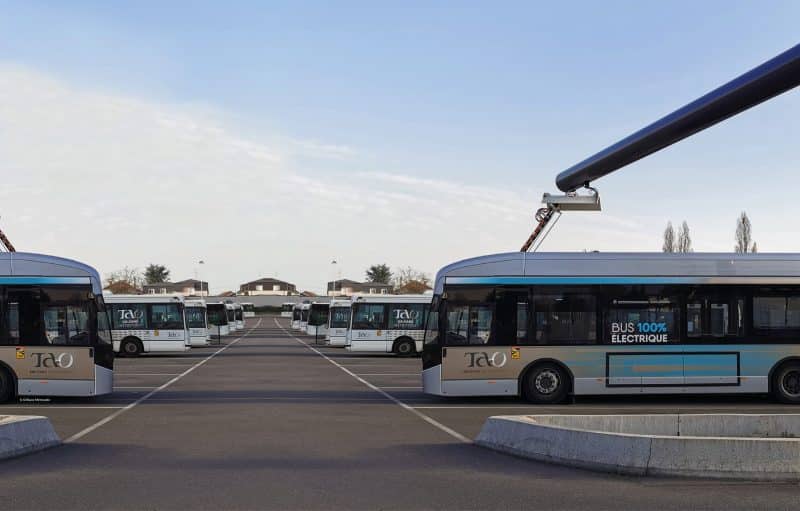
 Australia
Australia  Brazil
Brazil  Chile
Chile  China
China  Columbia
Columbia  Denmark
Denmark  Egypt
Egypt  France
France  India
India  Indonesia
Indonesia  Ireland
Ireland  Italy
Italy  Malaysia
Malaysia  New Zealand
New Zealand  Norway
Norway  Panama
Panama  Peru
Peru  Poland
Poland  Portugal
Portugal  Saudi Arabia
Saudi Arabia  Singapore
Singapore  Spain
Spain  South Korea
South Korea  Sweden
Sweden  Taiwan
Taiwan  Thailand
Thailand  Türkiye
Türkiye  United Kingdom
United Kingdom  United States
United States  Vietnam
Vietnam